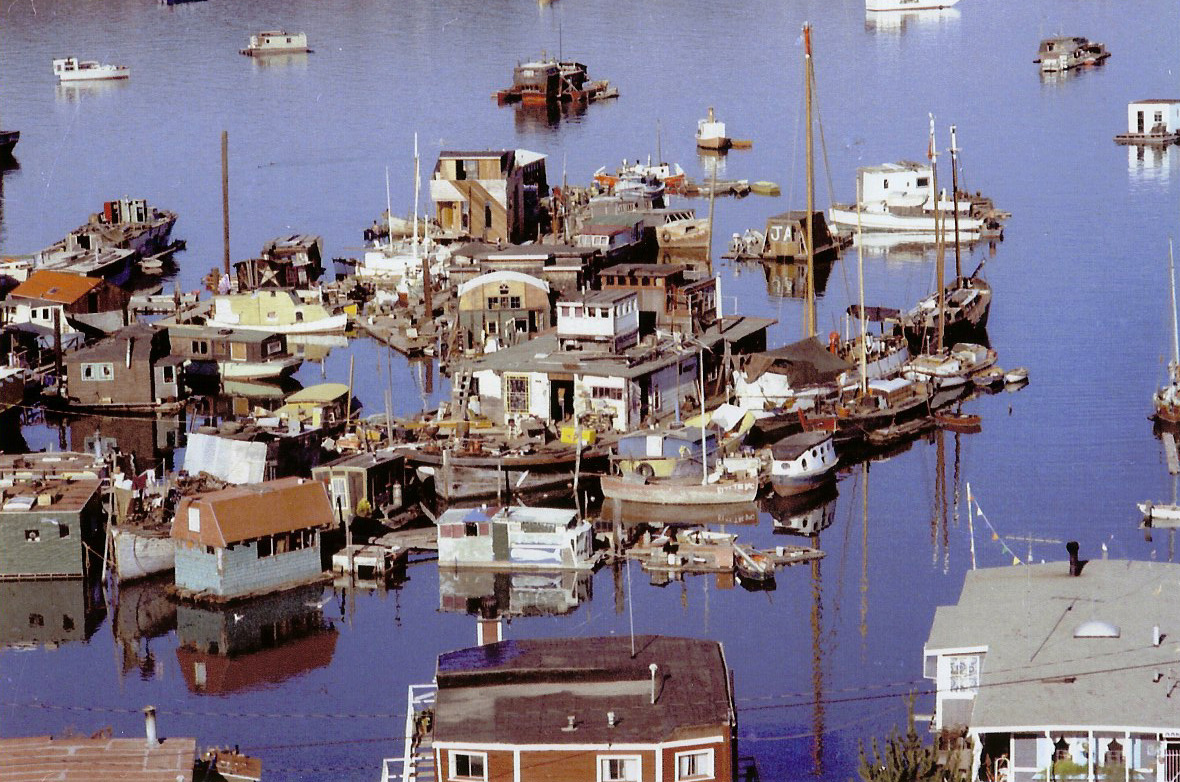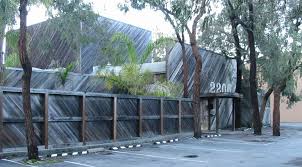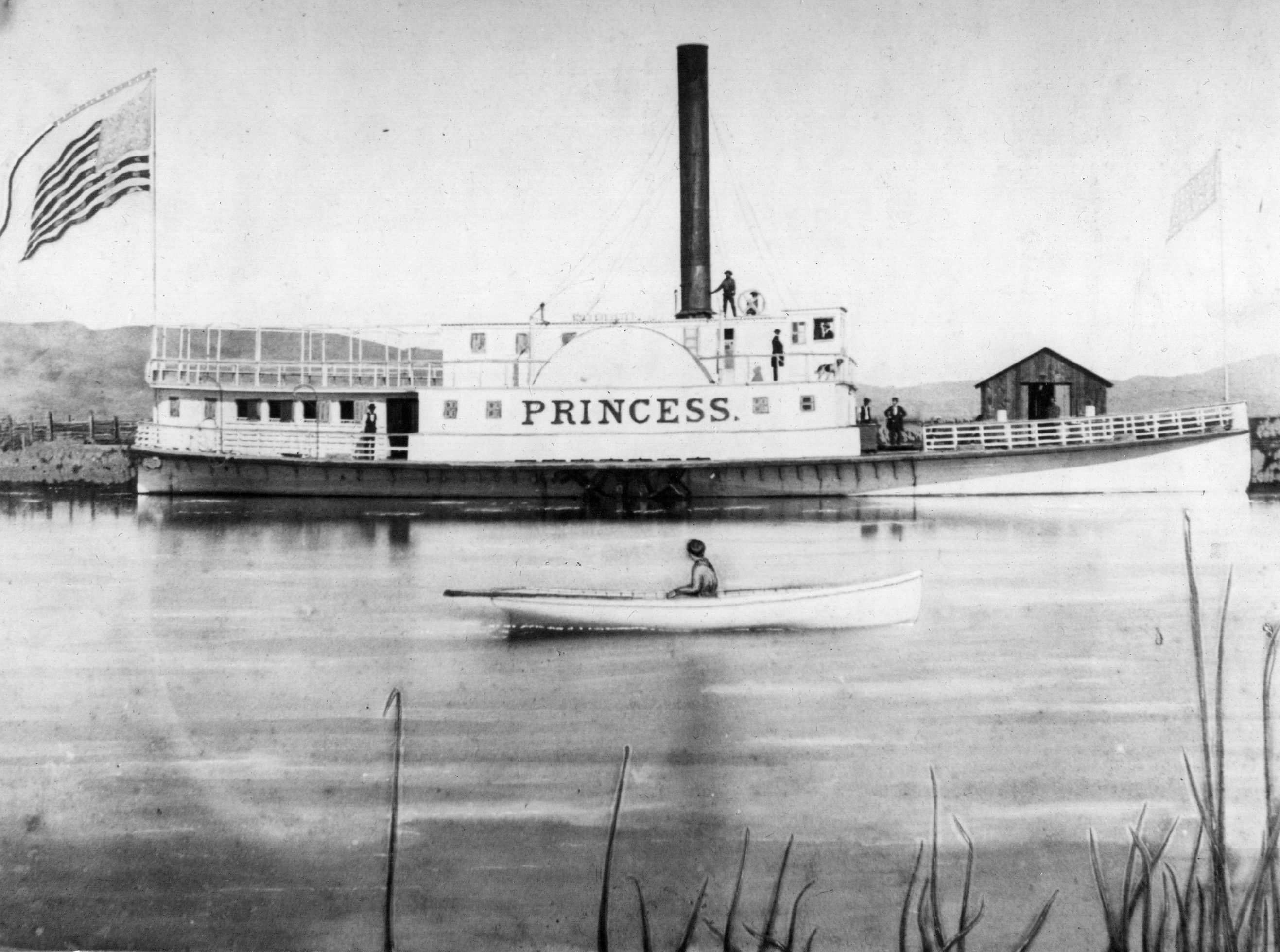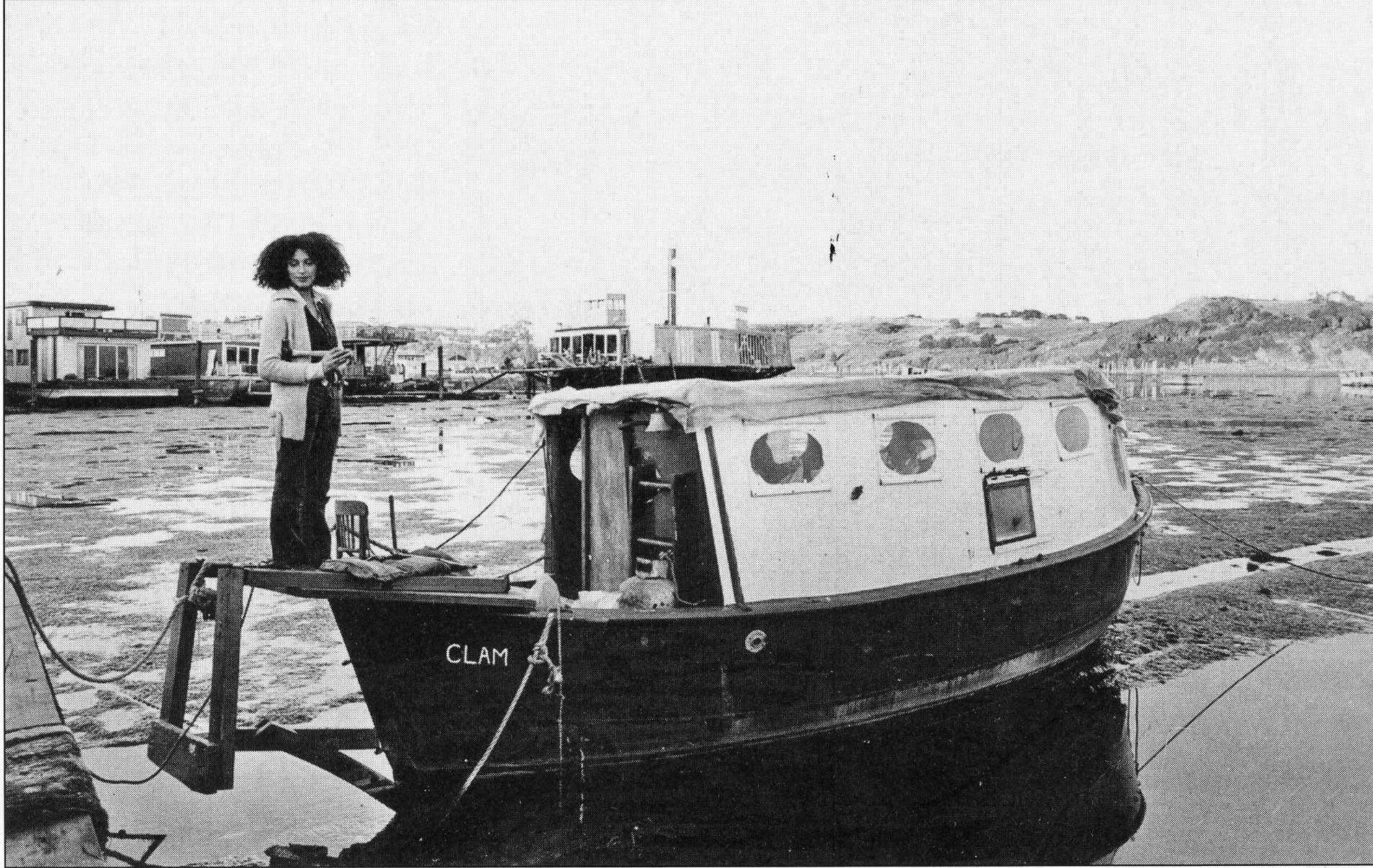How Issaquah Dock Developed
 Wednesday, September 9, 2015 at 02:58PM
Wednesday, September 9, 2015 at 02:58PM By Annie Sutter
As newcomers and young people continued to congregate on the Sausalito shores, many left a permanent imprint on the waterfront to come. One was Joe Tate, who arrived on the scene in the mid-1960s. He was a musician, a creative scrounger who could envision possibilities for renovation in the most unlikely flotsam and jetsam, and, as it states on his business card, an expert in "advanced finagling." Joe and a group of musicians formed a band called the "Red Legs" which became the nucleus of the rowdy community that was quickly growing from Gate 3 to Gate 6 at the shore's edge -- as well as in the mud at low tide. Their story is told in the film Last Free Ride. Here's a first-hand account from Joe about how these little communities sprang up and grew.

Hodgepodge surrounding Whitey’s Marina and the Oakland (center).
Photo by Charlotte Von Segesser, courtesy of Joe Tate
"We were able to get rehearsal space on an old sunken potato boat called the Oakland, at Gate 6. It was ideal for us and we were able to create the core of our original music there. There was a big WWII sub chaser sunk next to the Oakland and both hulks together formed a large island with a walkway connecting to the shore. One winter there was a big storm with violent winds. A huge section of floating dock broke loose from Kappas Marina, just north of Gate 6. The thing was drifting near Strawberry Point when we spotted it and we immediately went out and towed this giant hunk of flotsam back to the Oakland. With these floating docks tied to the Oakland, we had an instant marina, which filled up with small boats right away. We named it Whitey's Marina, after a cat, and painted a big sign on the side of the sub chaser that said WHITEY'S MARINA. Persons of authority would show up asking to see Whitey. Nobody ever knew where he was. And, of course, Whitey didn’t know either."
Paradise, perhaps, but home building proceeded with no regulations, no codes, no order -- the waterfront residents had formed a community within themselves. By the 1960s this hodgepodge extended from Gate 3 where the Arques shipyard hummed with activity related to building houseboats and concrete hulls, to Gate 6 where the ferryboat Issaquah lay. And to add to the jumble, owners seeking to fill the marshlands to increase their usable waterfront land went far and wide in the search for fill. Decaying barges were towed in from around the Bay area and from the Delta, and buried under what later would become the major thoroughfare connecting Yellow Ferry, Kappas and Waldo Point Harbor. Eucalyptus stumps were hauled down from the hills above and laid under what would become parking lots. Quarry tailings, rocks, soil from the construction of Highway 101, telephone poles, mattresses, and pilings salvaged from dismantled piers in San Francisco were used as fill. Cement was poured into sinkholes, aging vessels and vehicles were sunk into the mud. It was rumored that a Mercedes disappeared into the muck by accident.
This unsightly jumble offended some of Sausalito's citizens who complained to the Marin County Board of Supervisors and requested them to clean up the area. This led to the first physical confrontation between the houseboat dwellers and the authorities. In 1971 the County sent in police and sheriff's deputies with tugboats and bulldozers ready to clear and tow away two boats. Only one boat was boarded, for when the waterfront dwellers discovered the police in their midst, they rallied with a small flotilla of assorted vessels armed with oars, 2 x 4s, boathooks, and bags of sand, and rammed the police boats trying to tow one of their neighbors away. The law withdrew. More violence was to come, and it had become clear that something had to be done. If Waldo Point didn’t clean up its own act, the County would, (at least) try.
It's hard to follow the endless legal wrangling, the court orders and lawsuits between the land owners, the developers, the City of Sausalito, the county of Marin and the denizens of the waterfront community regarding codes, regulations, and ordinances, and the conflicts that followed. On one hand was Donlon Arques, landowner, trying to get permits to build a marina to clean up the very problems concerning the officials representing the "hill folk" of Sausalito. On the other hand were the agencies trying to enforce the rights of land owners and of developers, versus the residents of the waterfront community who did not want to see their way of life threatened by order, neatness, authority, conformity and higher rents. But these rebellious souls were only a small yet highly visible portion of the community. Most of the established residents of the waterfront were responsible people, artists and craftsmen and boat builders and construction workers who paid their rent, respected property rights, raised families and worked for a living. The stories of the labyrinthine politics and special interests at work in the time of the harbor development are best left to historians and politicians. But it is safe to say that once Waldo Point Harbor Corp. was formed, and permits were in place, management faced a long and tumultuous battle, huge expenses, endless negotiating and fierce local resistance before the project was finished.
What a difference a half-century makes! See how the Gates community has changed by taking in the 30t Annual Floating Homes Tour on Saturday, Sept. 12. For information and reservations, go to http://floatinghomes.org/tour/tour-info.




